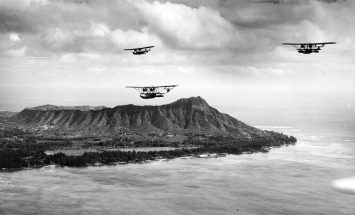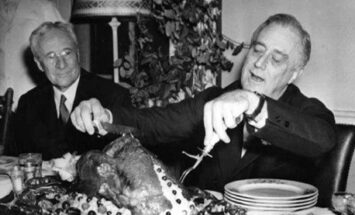Sailors man anti-aircraft guns during World War II on the USS Hornet. (U.S. Navy)
Before the Second World War, there were two broad categories of fuses: impact and timed.
Impact fuses are only detonated when they impacted or “touched” something, whereas timed fuses had to be set at specific times to detonate. Timed fuses were less than perfect, and small math errors could lead to a round going off too early, resulting in a less than optimal hit or a complete miss.
In 1940, the National Defense Research Committee asked the Carnegie Institution and Johns Hopkins University to complete research on proximity fuses. Scientists sent out radio waves and then measured the time it took for those waves to bounce back, allowing the fuse to detonate a set distance from an object. This required shrinking down a radio transmitter and receiver until it was small enough to fit in the space allotted for a fuse.
This, in turn, required many scientific breakthroughs, like shrinking down vacuum tubes and finding ways to cradle the sensitive electronics when a round was fired from the tube.
Scientist Dr. James Van Allen created a working fuse that detonated near its target approximately half the time.
On August 8, 1942 the USS Cleveland (CL 55) demonstrated the effectiveness of the proximity fuze against aircraft by successfully destroying three drones with proximity bursts fired by her five inch guns.
This solved a few problems. Ships were now less likely to run out of anti-aircraft ammunition while on long cruises and could defend themselves much better from concerted bomber attacks.
The fuses played an important role in Guadalcanal, where the USS Helena, one of the first three ships to receive it, helped to overwhelm a Japanese task force with her fast shooting capabilities.
From then on, naval commanders steered ships loaded with the advanced shells into the hearts of oncoming enemy waves, and the fuse was credited with 50 percent of the enemy losses the fleet attained even though only 25 percent of the ammo issued to the fleet had proximity fuses. Meaning, the fuse was outperforming traditional rounds three to one in routine combat conditions.
.jpg)


